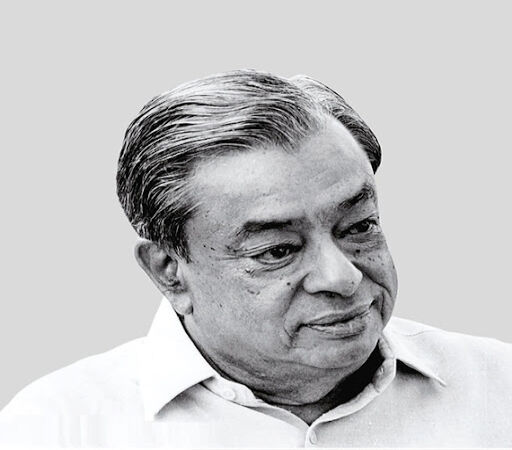
Verghese Kurien was an Indian dairy engineer and social entrepreneur. He led initiatives that contributed to the extensive increase in milk production in India termed as the White Revolution.
Kurien was born on 26 November 1921 in Calicut, Madras Presidency, British India (now Kozhikode, Kerala, India) in a Keralite Syrian Christian family. His father was a government civil surgeon and he did his schooling at Diamond Jubilee Higher Secondary School at Gobichettipalayam, where his father worked at the government hospital there. He graduated in physics from Loyola College in 1940 and received a bachelor's degree in mechanical engineering from the College of Engineering, Guindy affiliated with the University of Madras in 1943. His master's in mechanical engineering from Michigan State University in 1947.
In 1949, he was sent by the Government of India to run its experimental creamery at Anand, where he set up the Kaira District Cooperative Milk Producers' Union in 1950 which later became Amul. Amul organized the dairy farmers in the villages as a part of cooperatives and linked them to the milk consumers directly. In 1965, he was appointed as the head of the newly formed National Dairy Development Board (NDDB), which helped set up similar cooperatives across India and made dairy farming one of the largest self-sustaining industries and employment generators in rural areas. The dairy cooperatives were successful in increasing milk production as the dairy farmers controlled the procurement, processing, and marketing of milk and milk products as the owners of the cooperative. This led to a multi-fold increase in milk output over the next few decades and helped India become the world's largest milk producer in 1998. The co-operative model was later applied to other agricultural industries such as the production of edible oils and replicated in other countries.
Kurien negotiated with FAO, UNICEF of the United Nations, and the World Bank for aid to developing the cooperatives as a part of "Operation Flood". In the 1990s, he lobbied and fought hard to keep multinational companies from entering the dairy business even as the country opened up due to liberalization in 1991. India became the world's largest milk producer by 1998, surpassing the United States, and contributed to about 17 percent of global output in 2010–11.
For his contributions to increasing the dairy output, Kurien is known as the "Father of the White Revolution" in India. He was awarded the Ramon Magsaysay Award in 1964 and the World Food Prize in 1989. In 1999, he received the Padma Vibhushan, India's second highest civilian honor. He was conferred the Order of Agricultural Merit by the French Government in 1997. His birthday, 26 November is celebrated as the "National Milk Day" in India. He was bestowed with an honorary degree by the Michigan State University in 1965. During the World Dairy Expo in 1993, he was recognized as the International Person of the Year. He was also awarded the Godfrey Phillips Bravery Award for social bravery. He either headed or was on the boards of several public institutions and received honorary doctorate degrees from universities worldwide. The cooperative model pioneered by Kurien is studied in academia with lectures on the same.
He authored three books -An Unfinished Dream, I Too Had a Dream, and The Man Who Made The Elephant Dance.
Filmmaker Shyam Benegal wanted to make Manthan, a film story based on Amul but had no financial backing. The movie was later made from financial contributions from member-farmers of co-operatives, who contributed two rupees each and was released in 1976. A veterinarian, a milk technician, and a fodder specialist toured the country along with the screening of the film to persuade farmers to form cooperatives of their own with the United Nations using the movie to encourage similar cooperatives in Latin America and Africa. In 2013, Amar Chitra Katha published the comic Verghese Kurien: The Man with the Billion-litre Idea.
Kurien died from an illness at the age of 90 on 9 September 2012 at Nadiad near Anand. *(Collected from the public domain)
© indiachristians.in is Made with by Siona Solutions